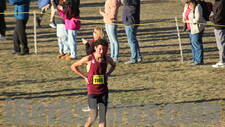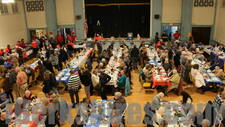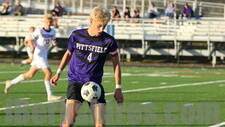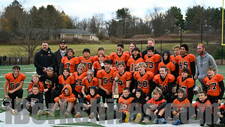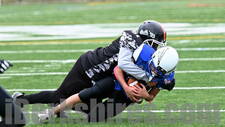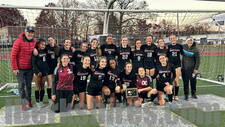Beannachtai na feile Padraig [Happy St. Patrick's Day]By Susan Bush
12:00AM / Friday, March 17, 2006
 | | Happy St. Patrick's Day! |
The wearin' o' the green is but one way to celebrate St. Patrick's Day; the holiday is steeped in many traditions that may add a bit of Irish charm to almost any home and hearth.
Irish Blessings
Children may enjoy hearing and learning Irish blessings. An example is "May you always have walls for the winds, A roof for the rain, Tea beside the fire, Laughter to cheer you, Those you love near you, And all your heart may desire." A variety of family-friendly St.Patrick's Day projects and crafts may be found at www.gpschools.org/ci/ce/elem/holidays/stpat.htm
Families may develop their own version of a St. Patrick's Day trivia game. For example, in the United States, Massachusetts, Delaware and New Hampshire claim the highest number of people with Irish ancestry [according to U.S. Census Bureau data].
In the United States, 34 million people claim Irish heritage; almost nine times that of the entire population of Ireland! The very first St. Patrick's Day parade was held in New York City on March 17, 1762 and the marchers were Irish soldiers who served with English military forces. And although green beer and whiskey-laced Irish coffee are traditional St. Patrick's Day drinks in the U.S., Irish law forbid pubs in Ireland to open on March 17 as recently as the 1970s.
Irish Food
From breakfast to dinner, serving Irish foods or beverages may bring an authentic touch to the day. A hearty Irish omelet is made from six small eggs, 1 cooked and mashed potato, the juice from one freshly-squeezed lemon, 1 teaspoon chopped chives or scallions, and salt and pepper. To prepare, separate the yolks from the egg whites and beat yolks into the mashed potato. Add the juice, chives, salt and pepper to the mixture. Whisk egg whites until stiff and fold into potato mixture. Cook to golden brown in an omelet pan coated with butter; then place under a broiler until the omelet "puffs up."
Corned beef and cabbage suppers are common St. Patrick's Day fare; for something a bit different, try colcannon. Boil six peeled potatoes and mash, cook two strips of bacon, and then boil a half-pound of shredded cabbage with the cooked bacon and a half-cup of water. Cabbage should be cooked until it is very tender, then drained. Melt two tablespoons of butter in a large saucepan and add 1 teaspoon minced onion, 1/2 teaspoon salt and an 1/8 teaspoon pepper, the potato and cabbage. Blend and heat.
Irish Lore
St. Patrick's Day commemorates the death of Saint Patrick, who is believed to have died on March 17, 461. Saint Patrick's birth name is thought to have been Maewyn Succat and his baptismal name is believed to have been Patricius. Much lore surrounds his life but it is widely believed that he was born in Scotland and kidnapped at age 16. After his capture, he was sold into slavery in Ireland, where he endured mistreatment as a shepherd. It is believed that he escaped to Gaul, now known as France, after six years of slavery and later returned to Ireland as a missionary. Saint Patrick is thought to be responsible for bringing Catholicism to the Irish people.
Leprechauns are associated with modern-day St. Patrick's Day greeting cards and decorations, and while they are creatures created from imagination, leprechauns have earned a reputation as being the most anti-social of all Irish "faeries." Ironically, leprechauns are also associated with good luck, and are included in this version of an Irish blessing: "May the leprechauns be near you, to spread luck along your way, And may all the Irish angels, smile upon you St. Patrick's Day."
Susan Bush may be reached via e-mail at suebush@iberkshires.com or at 802-823-9367.
|



